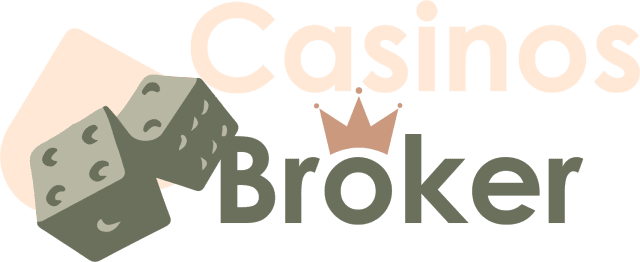What’s a ‘Main Street’ vs. a Middle-Market Company?
When you decide to exit an iGaming business—whether it is a boutique white-label casino skin, a niche sports-betting affiliate network, or a full-stack B2B platform—the first strategic question is deceptively simple: Are you a Main Street company or a middle-market company?
The answer determines how much buyers will pay, how they will structure that payment, and even who those buyers are likely to be. Well-informed founders leverage this distinction early; poorly advised founders discover it—painfully—during due diligence.
Below you will find a practitioner’s guide to understanding and applying the distinction so you can capture every euro of value your operation deserves.
One Glance Guide
| Criterion | Main Street Business | Middle-Market Business |
|---|---|---|
| Typical Annual Revenue | < €10 m | €10 m – €100 m + |
| Cash-Flow Measure | Seller’s Discretionary Earnings (SDE) | EBITDA |
| Valuation Range (2024-25 median)* | 2 – 3× SDE | 4 – 6× EBITDA |
| Buyer Archetype | Individual owner-operator | Institutional investor or strategic |
| Management Post-Sale | Buyer works full-time in business | Professional team retained or installed |
| Perceived Risk | Higher | Lower |
| Common iGaming Examples | Local retail betting shops; single-site affiliate blogs | Omni-channel operators; B2B platform or payment providers |
*Private-market data aggregated from PitchBook, First Page Sage, and recent brokered transactions.
Why the Line Matters
Valuations in the iGaming industry follow the same broad pattern seen across private markets: the larger and more system-dependent the business, the lower the perceived idiosyncratic risk and the higher the multiple of cash flow buyers are willing to pay. That is why a €750 k-SDE tipster portal may clear at 2.4× SDE while a €5 m-EBITDA casino content studio negotiates 5.5× EBITDA plus an earn-out. Institutional capital is chasing platform scale and is structurally willing to pay more for it.
Anatomy of a Main Street iGaming Business
Main Street organisations tend to be owner-centric. The founder writes the marketing copy, approves every KYC exception, and knows the MAC address of the RTG server by heart. Cash flow is best captured by SDE, which folds the owner’s salary, perks, and one-off adjustments into a single metric. Banks lending to individuals anchor on SDE because it approximates the cash the buyer needs to live on. Deals close faster but at lower multiples; the buyer pool is broad yet often inexperienced.
Anatomy of a Middle-Market iGaming Business
Middle-market firms—€10 m to €100 m in annual revenue, €1 m + EBITDA—look and feel like scaled enterprises. They have compliance departments, ISO-27001 audits, and board packs. Their buyers are institutions: private-equity funds rolling up sportsbook margins, listed gaming groups looking for geography or vertical expansion, or payment-processing companies chasing bolt-on synergies. Valuation is driven by EBITDA and a chessboard of comparable transactions. Multiples float upward because disciplined processes invite competitive tension.
Marketing the Deal: Two Playbooks
For a Main Street listing, the advisor’s job is to craft a concise teaser and distribute it on high-visibility portals and entrepreneur forums. Price is posted; confidentiality is controlled by NDAs; negotiations are linear.
Middle-market campaigns resemble capital-raising mandates. Advisors curate a short list of 30-50 acquirers, develop a 50-page Confidential Information Memorandum, and run parallel conversations in numbered data rooms. Price guidance is framed as a range, often subject to vendor due diligence. The process is longer (six to nine months) but yields richer deal structures, including rollover equity and contingent earn-outs.
Pros and Cons of Each Route
Main Street Sale
Pros: Faster to market; lower advisory fees; simpler diligence.
Cons: Lower multiples; financing tied to buyer’s personal credit; high execution risk if founder is indispensable.
Middle-Market Sale
Pros: Higher multiples; sophisticated earn-out or rollover options; access to growth capital post-close.
Cons: Prolonged diligence; extensive legal and compliance scrutiny (crucial in regulated gaming markets); deal expenses can exceed 5 % of enterprise value.
Frequently Asked Questions
1. Can a company “graduate” from Main Street to middle-market status before exit?
Yes. Strengthening second-tier management, documenting processes, and hitting the €1 m EBITDA threshold can reposition an asset in under 24 months.
2. Do multiples differ by vertical within iGaming?
They do. B2B platform providers and content studios command a premium to pure-play affiliates due to contractual recurring revenue and tech IP. Retail OTC betting shops trend toward the lower end because of license concentration and foot-traffic risk.
3. What funding sources are common for Main Street buyers?
Personal savings, SBA-style bank loans (where available), and vendor financing. Institutional leverage rarely features.
4. How does regulation affect classification?
Heavy licencing regimes raise buyer diligence cost. A small operator in a tightly regulated market may still clear at middle-market multiples if licences are scarce and transferable.
5. I have €3 m in annual revenue but €800 k in EBITDA—where do I land?
Revenue says Main Street, profit says “on the cusp.” In practice, buyer type and management depth will decide.
Final Thought
Treat “Main Street versus middle-market” not as a label but as a lever. The moment you can demonstrate transferable management, verifiable compliance, and at least €1 m of sustainable EBITDA, the buyer universe changes—and so does the cheque size. By planning eighteen months ahead, tightening controls, and narrating a growth story grounded in data, you can reposition an iGaming enterprise for middle-market reception and unlock materially higher proceeds at closing.
For a tailored readiness check or an informal valuation range, feel free to reach out—our team has closed transactions on both sides of the divide and across four continents.

